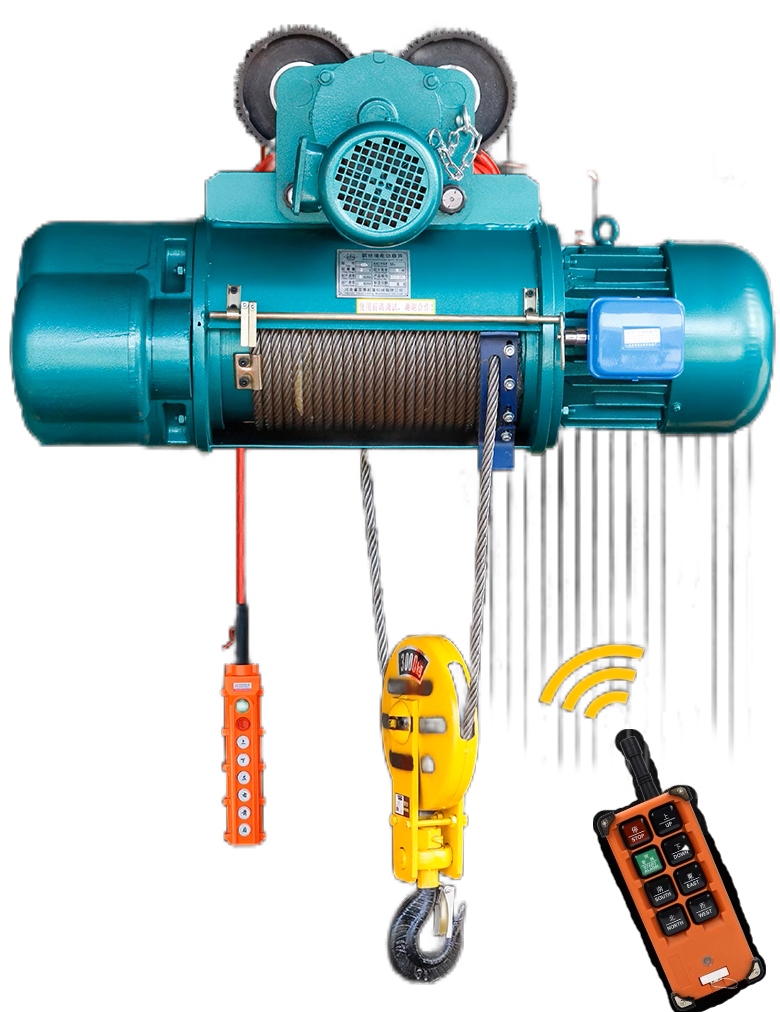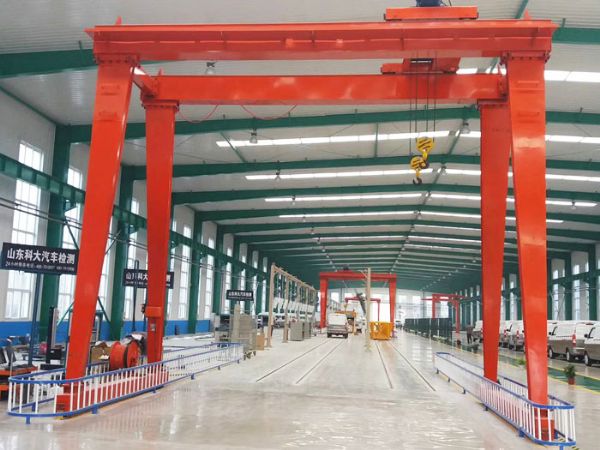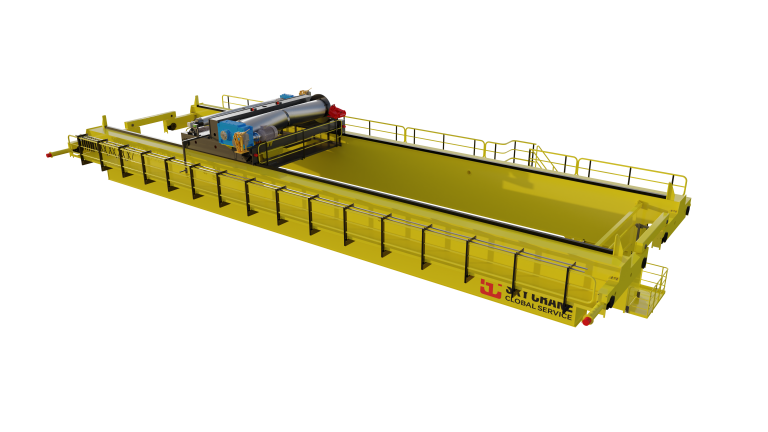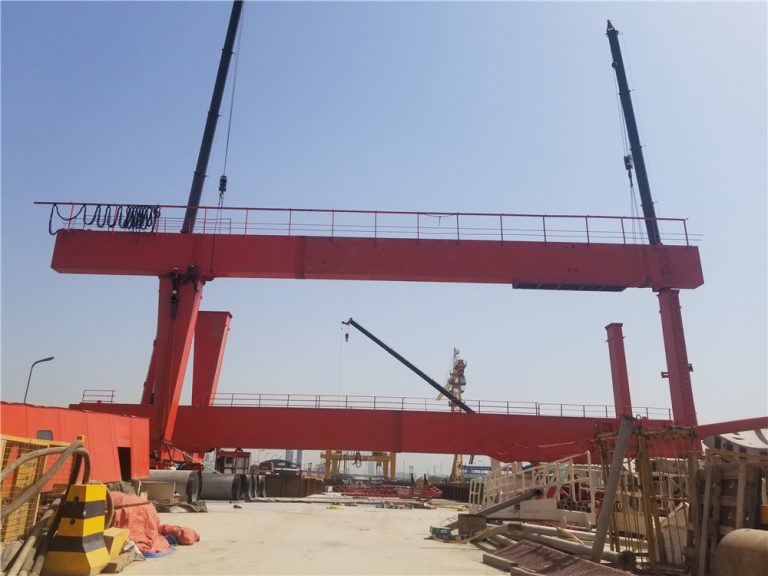Table of Contents
مزايا استخدام معدات الرفع الحديثة في عمليات الموانئ
لا.
| المنتج | شعاع كهربائي أوروبي فردي |
| 1 | الرافعة الجسرية المثبتة على السكك الحديدية |
| 2 | الرافعة على الطراز الأوروبي |
| 3 | رافعة الميناء |
| 4 | تدابير وضوابط السلامة لمعدات الرفع في الموانئ |
أحدث الابتكارات التكنولوجية في معدات الرفع لصانعي الموانئ
تلعب معدات الرفع دورًا حاسمًا في عمليات الموانئ حول العالم. من تحميل وتفريغ البضائع إلى نقل الحاويات والآلات الثقيلة، تعد معدات الرفع الفعالة والموثوقة ضرورية لحسن سير العمل في مرافق الميناء. في السنوات الأخيرة، حدثت تطورات كبيرة في تصميم وتكنولوجيا معدات الرفع لصانعي الموانئ، مما أدى إلى زيادة الكفاءة والسلامة والإنتاجية.
أحد أحدث الابتكارات التكنولوجية في معدات الرفع لصانعي الموانئ هو تطوير الآليات أنظمة مناولة الحاويات. تستخدم هذه الأنظمة الروبوتات المتقدمة والذكاء الاصطناعي لتبسيط عملية تحميل وتفريغ الحاويات من السفن والشاحنات والقطارات. من خلال أتمتة هذه المهام، يمكن لمشغلي الموانئ تقليل الوقت والعمالة المطلوبة للتعامل مع الحاويات بشكل كبير، مما يؤدي إلى أوقات تسليم أسرع وزيادة الإنتاجية.
أحد الابتكارات الرئيسية الأخرى في معدات الرفع لصانعي الموانئ هو استخدام الرافعات وأنظمة الرافعات الجسرية التي يتم التحكم فيها عن بعد . تسمح هذه الأنظمة للمشغلين بالتحكم في معدات الرفع من مسافة آمنة، مما يقلل من مخاطر الحوادث والإصابات. تتيح الرافعات التي يتم التحكم فيها عن بعد أيضًا للمشغلين العمل بكفاءة أكبر، حيث يمكنهم بسهولة ضبط موضع الرافعة وزاويتها دون الحاجة إلى الصعود فعليًا إلى الكابينة.
بالإضافة إلى الأتمتة والتحكم عن بعد، كان للتقدم في تكنولوجيا الاستشعار أيضًا دور تأثير كبير على تصميم معدات الرفع لصانعي الموانئ. يمكن استخدام المستشعرات لمراقبة وزن الأحمال وموضعها وثباتها، مما يوفر للمشغلين بيانات في الوقت الفعلي لضمان عمليات الرفع الآمنة والفعالة. من خلال دمج أجهزة الاستشعار في معدات الرفع، يمكن لصانعي الموانئ تقليل مخاطر الحوادث والأضرار التي تلحق بالبضائع، مع تحسين أداء معداتهم أيضًا.
علاوة على ذلك، أحدث دمج تقنية إنترنت الأشياء (IoT) في معدات الرفع ثورة في الطريقة يقوم مشغلو الموانئ بإدارة وصيانة معداتهم. يمكن توصيل معدات الرفع التي تدعم إنترنت الأشياء بنظام مراقبة مركزي، مما يسمح للمشغلين بتتبع أداء وحالة معداتهم في الوقت الفعلي. يمكن استخدام هذه البيانات لجدولة أعمال الصيانة والإصلاحات بشكل استباقي، مما يقلل من وقت التوقف عن العمل ويطيل عمر المعدات. والإنتاجية. من خلال دمج الأتمتة والتحكم عن بعد وتكنولوجيا الاستشعار واتصال إنترنت الأشياء في معدات الرفع الخاصة بهم، يمكن لمشغلي الموانئ تبسيط عملياتهم وتقليل التكاليف وتحسين الأداء العام.
في الختام، فإن مستقبل معدات الرفع لصانعي الموانئ مشرق، مع التقدم المستمر في التكنولوجيا يقود الابتكار والتحسين في الصناعة. ومع استمرار الموانئ في التوسع والتعامل مع كميات أكبر من البضائع، فإن الطلب على معدات الرفع الفعالة والموثوقة سوف يستمر في النمو. ومن خلال البقاء في طليعة التطورات التكنولوجية، يمكن لصانعي الموانئ ضمان بقاء عملياتهم تنافسية ومستدامة في السوق العالمية دائمة التطور.
Lifting equipment plays a crucial role in the operations of ports around the world. From loading and unloading cargo to moving containers and heavy machinery, these machines are essential for the efficient functioning of port facilities. However, the use of lifting equipment also poses significant risks to workers and the surrounding environment if not properly managed. Therefore, it is essential for port operators to adhere to strict safety measures and regulations to ensure the safe operation of lifting equipment in ports.
One of the most important safety measures for lifting equipment in ports is regular inspection and maintenance. All lifting equipment should be inspected by qualified personnel on a regular basis to ensure that it is in good working condition. Any defects or malfunctions should be promptly addressed to prevent accidents and injuries. Additionally, routine maintenance should be carried out to keep the equipment in optimal condition and prevent breakdowns.
Another crucial safety measure for lifting equipment in ports is proper training for operators. Operating lifting equipment requires specialized skills and knowledge, and operators should undergo thorough training before being allowed to operate such machinery. Training should cover topics such as equipment operation, safety procedures, and emergency protocols. Regular refresher courses should also be provided to ensure that operators are up to date with the latest safety regulations and best practices.
In addition to regular inspection, maintenance, and training, ports should also adhere to strict regulations governing the use of lifting equipment. These regulations are put in place to ensure the safety of workers and the surrounding environment. Port operators should familiarize themselves with these regulations and ensure that they are fully compliant at all times. Failure to comply with regulations can result in fines, penalties, and even the suspension of operations.
One of the key regulations governing the use of lifting equipment in ports is the requirement for proper documentation. All lifting equipment should have up-to-date documentation, including inspection reports, maintenance records, and operator certifications. This documentation should be readily available for inspection by regulatory authorities to ensure that the equipment is being properly maintained and operated.
Another important regulation for lifting equipment in ports is the requirement for safety devices and features. All lifting equipment should be equipped with safety devices such as overload protection, emergency stop buttons, and warning alarms. These devices are designed to prevent accidents and injuries by alerting operators to potential hazards and stopping the equipment in case of an emergency.
In conclusion, the safe operation of lifting equipment in ports is essential for the efficient functioning of port facilities and the protection of workers and the environment. By adhering to strict safety measures and regulations, port operators can ensure that lifting equipment is operated safely and effectively. Regular inspection, maintenance, training, and compliance with regulations are key components of a comprehensive safety program for lifting equipment in ports. By prioritizing safety, port operators can prevent accidents, injuries, and costly downtime, ultimately leading to a more productive and sustainable port operation.
Latest Technological Innovations in Lifting Equipment for Port Makers
Lifting equipment plays a crucial role in the operations of ports around the world. From loading and unloading cargo to moving containers and heavy machinery, efficient and reliable lifting equipment is essential for the smooth functioning of port facilities. In recent years, there have been significant advancements in the design and technology of lifting equipment for port makers, leading to increased efficiency, safety, and productivity.
One of the latest technological innovations in lifting equipment for port makers is the development of automated container handling systems. These systems use advanced robotics and artificial intelligence to streamline the process of loading and unloading containers from ships, trucks, and trains. By automating these tasks, port operators can significantly reduce the time and labor required to handle containers, leading to faster turnaround times and increased throughput.
Another key innovation in lifting equipment for port makers is the use of remote-controlled cranes and gantry systems. These systems allow operators to control lifting equipment from a safe distance, reducing the risk of accidents and injuries. Remote-controlled cranes also enable operators to work more efficiently, as they can easily adjust the position and angle of the crane without having to physically climb into the cab.
In addition to automation and remote control, advancements in sensor technology have also had a significant impact on the design of lifting equipment for port makers. Sensors can be used to monitor the weight, position, and stability of loads, providing operators with real-time data to ensure safe and efficient lifting operations. By incorporating sensors into lifting equipment, port makers can minimize the risk of accidents and damage to cargo, while also optimizing the performance of their equipment.
Furthermore, the integration of Internet of Things (IoT) technology into lifting equipment has revolutionized the way port operators manage and maintain their equipment. IoT-enabled lifting equipment can be connected to a central monitoring system, allowing operators to track the performance and condition of their equipment in real-time. This data can be used to schedule maintenance and repairs proactively, reducing downtime and extending the lifespan of the equipment.
Overall, the latest technological innovations in lifting equipment for port makers have transformed the way ports operate, leading to increased efficiency, safety, and productivity. By incorporating automation, remote control, sensor technology, and IoT connectivity into their lifting equipment, port operators can streamline their operations, reduce costs, and improve overall performance.
In conclusion, the future of lifting equipment for port makers is bright, with continued advancements in technology driving innovation and improvement in the industry. As ports continue to expand and handle larger volumes of cargo, the demand for efficient and reliable lifting equipment will only continue to grow. By staying at the forefront of technological developments, port makers can ensure that their operations remain competitive and sustainable in the ever-evolving global marketplace.







